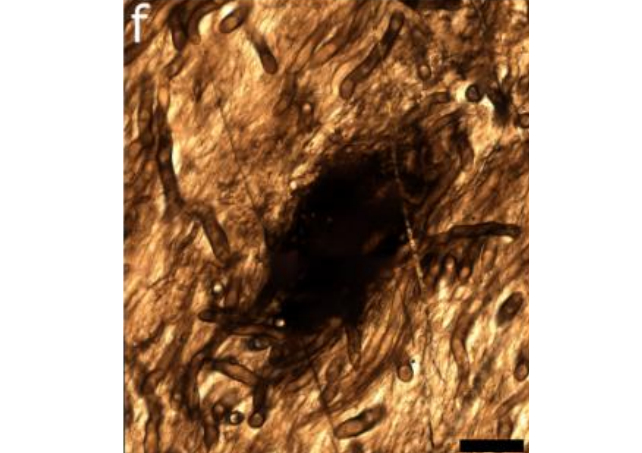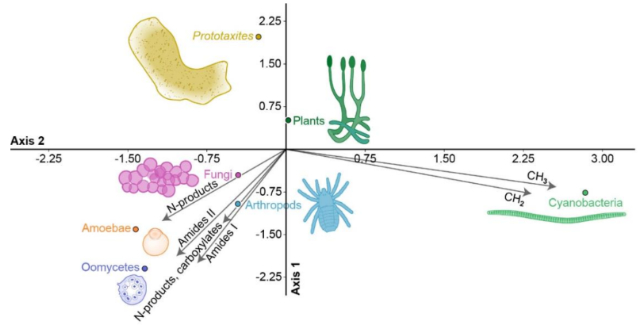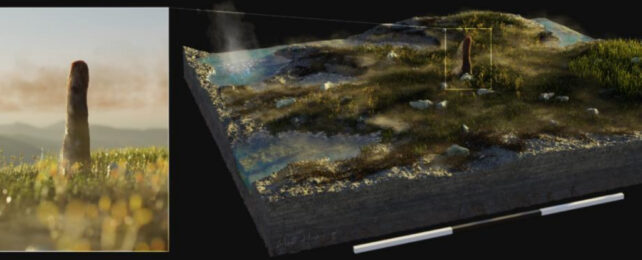Ever since their discovery more than 165 years ago, massive fossilized structures left by an organism known as Prototaxites have proven impossible to categorize.
Researchers in the UK have now suggested in a report that is yet to be peer reviewed that there's a very good reason these oddities don't fit neatly on the tree of life – they belong to a branch all of their own, with no modern equivalent.
Some 400 million years ago, the swamps of the late Silurian period would have sprouted a mix of horsetails, ferns, and other prototype plants that look positively alien today.
Among them stretched 8-meter (26-foot) tall towers that defy easy identification. Wide and branchless, researchers have variously suggested these organisms were a form of algae or ancient conifer, based on what little evidence remains.
Fossils found on the shores of Gaspé Bay in Quebec, Canada, were initially considered by geologist John William Dawson to be the remains of rotting trees, leading to his naming it 'first conifer' back in the 1850s.
Though the name stuck, confusion over the fossil's classification continued, until National Museum of Natural History paleontologist Francis Hueber confirmed in 2001 that Prototaxites was indeed most likely an enormous fungus.
That conclusion was backed up years later in 2017, by a subsequent analysis of a fossil fragment assumed to be from the peripheral region of a smaller Prototaxites species named P. taiti. This study claimed to identify textures that resembled the fertile structures of today's Ascomycota fungi.
Not everybody is convinced, however, given the possibility the distinct fragments might not have even been connected.

A yet-to-be-published study on three different P. taiti fragments, led by researchers at the University of Edinburgh, argues there's insufficient evidence to conclude Prototaxites is a fungus at all.
Through a review of microscopic anatomy and chemical analysis of its tubular structures, the team systematically eliminated each and every candidate group, leaving no modern organism it might share some kind of ancestral relationship with.
Fungi? Rejected thanks to the unique way its anatomy connects. A plant or algae? Not likely given its chemical composition. A mix of the two, such as a lichen? Not with that anatomy. Some bizarre animal? Cell walls say no chance.

"Based on this investigation we are unable to assign Prototaxites to any extant lineage, reinforcing its uniqueness," the researchers claim.
"We conclude that the morphology and molecular fingerprint of P. taiti is clearly distinct from that of the fungi and other organism preserved alongside it in the [Devonian deposit], and we suggest that it is best considered a member of a previously undescribed, entirely extinct group of eukaryotes."
What might have happened to this long-dead group of organisms is anybody's guess. Further review of the study may even return the mystifying group back to its box among ancient fungi.
Without similar specimens to relate them to, Prototaxites may simply remain a fossil anomaly – a reminder that evolution is a constant experiment, one littered with far more failures than we may ever have realized.
This research can be accessed on the pre-peer review server, bioRxiv.
